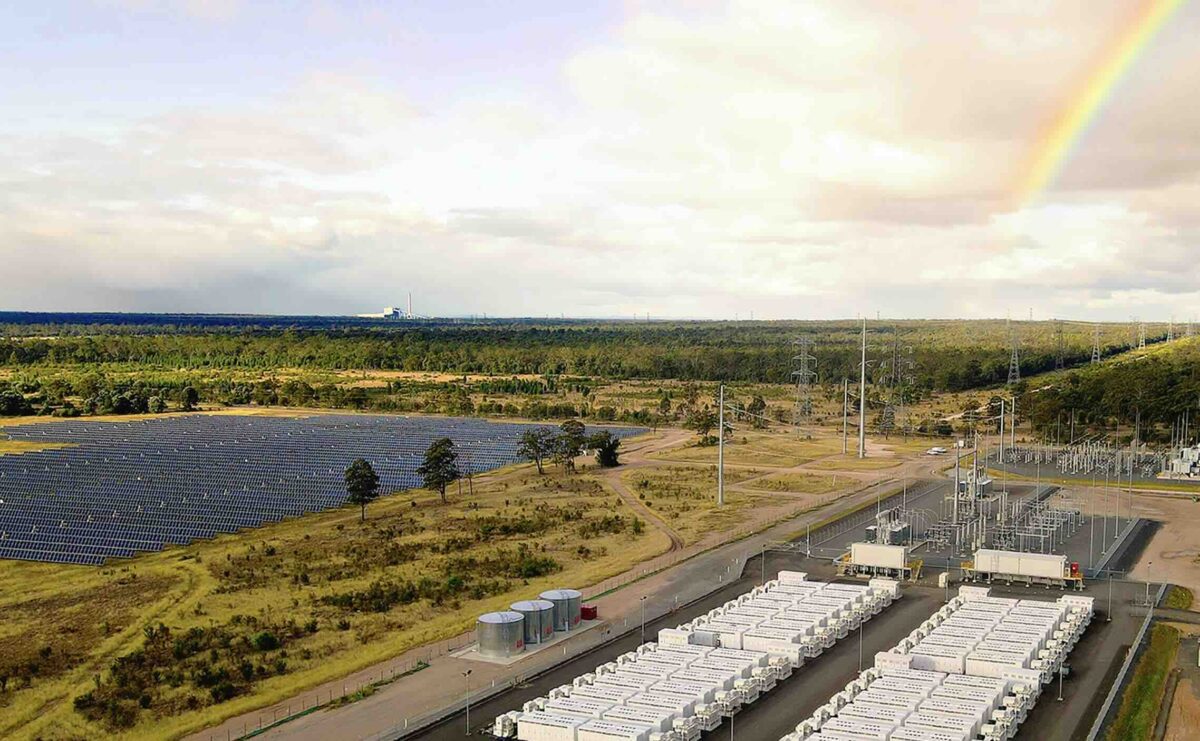The big battery storage market continues to charge ahead beyond expectations, buoyed on Tuesday by the doubling of planned capacity at what is already Queensland’s biggest battery, and a host of new projects that have taken the sector to levels and dimensions not contemplated even `12 months ago.
The first 270 megawatt (MW) and 540 megawatt (MWh) stage of the Western Downs battery has only just been completed and is entering the commissioning phase.
A second stage of the same dimensions will now be added after project owner Neoen announced on Tuesday that it landed a “virtual” battery contract with AGL. That will take its total size to 540 MW and 1080 MWh.
According to energy industry analysts at Rystad Energy, the construction starts for big battery projects in Australia are already approaching their 2024 forecasts of 4 GW, and are likely to exceed that number given the huge pipeline of projects, the falling costs of battery cells, and the various storage tenders being held around the country.
Rystad data shows that 3.6 GW of battery storage capacity has begun construction in 2024, much of it owned, controlled or contracted by the big utilities – AGL, Origin Energy and EnergyAustralia in the main grid, and Synergy in Western Australia.
Battery dimensions are getting bigger too, both in terms of capacity and in storage duration. The first burst of projects had relatively short storage durations, around 1 to 1.5 hours, because the markets they were focused on – such as frequency control – did not require any more.
Now the projects are looking at time shifting the output of wind and solar, taking it from times of surplus to the evening peaks.
And that requires more storage: In Western Australia, where the main goal currently is to squash the so-called “solar duck” by soaking up rooftop solar in the middle of the day and saving it for the evening peak, the preferred dimension is four hours storage.
That is delivering the country’s biggest battery, the 560 MW and 2240 MWh Collie battery being built by Neoen, and another 2,000 MWh battery (with 500 MW of capacity), being built up the road by Synergy.
In NSW, three eight hour batteries have been contracted – sized at 49 MW and 392 MWh (Goulburn River), 50 MW and 400 MWh (Limondale) and 275 MW and 2,200 MWh (Richmond Valley).
More storage will be unveiled later this year, firstly with a 600 MW and 2,400 MWh focused on Victoria and South Australia, then a 500 MW, 2,000 MWh tender in Western Australia, and a tender for 1 GW of long duration storage (eight hours) in NSW.
Perhaps the biggest question for these rapidly expanding battery storage projects is will there be enough surplus wind and solar energy to store?

Rystad Energy’s data suggests around 3 GW of large scale wind and solar capacity will begin construction this year, which is around half of the annual capacity required to meet the federal government’s target of 82 per cent renewables by 2030, and the Australian Energy Market Operator’s modelled roadmap.
The construction of large scale wind and solar will get a boost when the federal government announces later this year the winning projects for six gigawatts of new capacity in the first major tender of its Capacity Investment Scheme.
Some of those projects, such as the country’s biggest wind project at Golden Plains in Victoria (1.33 GW over two stages), already have a head start, on the assumption that they will be well placed to secure the underwriting agreements on offer in the CIS tender.
That first auction will be followed by twice-yearly offerings designed to ensure that enough wind and solar is built across the country’s main grids by the 2030 renewable target deadline.
The CIS has been required however, because wind and solar farm developers have found it hard to land contracts with big corporates and the big utilities that control the market.
The latter have been focused on big batteries because that ensures they are able to hedge their retail and supply contracts, and retain their pricing control over the wholesale electricity markets.
Big batteries might have offered the prospect of more competition, as they showed when smashing some niche cartels such as frequency control market soon after the launch of the very first big battery at Hornsdale in 2017.
But when the bulk of battery storage capacity is owned, operated, or controlled by the majors – including through virtual contracts like that struck at Western Downs – then the competition impact is potentially muted. It simply adds to their tool box of dispatchable capacity.
On the other hand, none of the energy majors are promising to deliver the required wind and solar capacity that their share of the retail market might require, although AGL is starting to get close.
Origin, for instance, has committed to just 4 GW of new capacity by the end of the decade, having delivered little or no new capacity since announcing in 2022 the “early” closure of the country’s biggest coal generator Eraring, only for that timeline to be extended, with the help of government funding, when insufficient capacity was built.

Battery storage, however, is benefiting from falling costs, with significant reductions in the cost of battery cells over the past year. It is now falling at the same rate as solar PV a few years ago, and while the cost of PV modules is also at a record low, battery storage is less encumbered by soaring civil construction costs as wind and solar.








